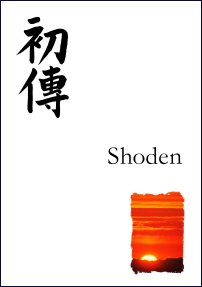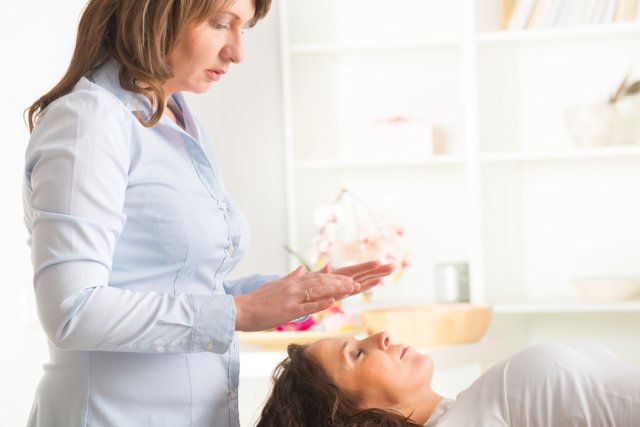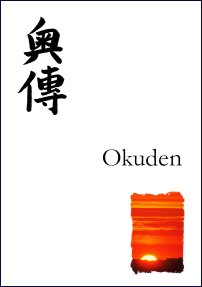Treat like clockwork?
In some Reiki lineages, students are taught to spend a set amount of time treating each hand position, no matter who they are working on, and some practitioners use audio CDs with little ‘bells’ that sound out every three minutes, say.
But isn’t this a bit mechanical, and everyone’s different, so why would we give essentially the same treatment to everyone that we work on?
Altering your treatments to suit the client
The energy needs of each person that we work on will be different, so it’s reasonable to expect each Reiki treatment that we give to be different, based on the individual energy needs of the client.
I don’t think we should treat everyone like a “Reiki robot”, changing hand position every time a bell pings, no matter what the client’s energy system needs on that occasion. In my last blog I spoke about moving beyond the standard hand positions that are taught in some lineages, and we can also move beyond the idea of treating for the same amount of time in each hand position.
Clients will have areas of the body that need Reiki more than others, so it makes sense to spend longer in these areas of need, and to spend less time in areas where there’s not such a great need for Reiki to flow.
How to know how long to take in one position
So how can we work out how long we should spend in each hand position? I would like to suggest two methods, one based on sensing the flow of energy, and one based on intuition.
Most Reiki people can feel the flow of energy through their hands, which often shows itself as heat, fizzing, tingling, buzzing, heaviness, a magnetic feeling or whatever, if you can feel the flow of energy through your hands then you will be able to tell whether the hand position you are using is drawing lots of energy.
Sometimes it’s completely clear, since your hands are absolutely ‘on fire’!
It would be a good idea to stay in that hand position for longer, and after a while you will start to notice that the flow of energy – and associates sensations – starts to reduce in intensity.
When things have calmed down, move onto your next hand position.
We can also allow our intuition to guide us in terms of how long we spend working on a particular part of the body. Everyone is intuitive, and our intuition can make itself known to us in different ways. We may feel ‘locked’ into a particular hand position, or have an ‘inner knowing’ that we should stay where we are for the time being.
One little trick that I have used in the past to tell whether I need to stay where I am or move on involves using a visualisation that connects to your inner knowing: when treating someone, and I’m wondering whether I should move on now, I have an imaginary hand appear in my mind’s eye, resting where my real hand is.
I imagine that this imaginary hand moves away from the body, as if on a piece of elastic, and if the imaginary hand wants to pull itself back to its original position, pulled by the elastic, then I should stay there for longer.
If the hand seems happy to drift away, in my mind’s eye, then I know it’s ok to move on to a new position… just a little visualisation that you can use to access intuitive knowledge.
Over to you
If these approaches are new to you, why not try them and see what happens, and let us know about your experiences by posting a message below.
Or maybe you started out doing treatments with standard timings, and now you don’t.
How did that happen, and what do you think about the quality of your treatments now that you’re working more freestyle?
Here’s lots of advice about giving treatments
 If you’d like some guidance about giving Reiki treatments, I have a whole load of advice and suggestions for you in the Reiki Evolution First Degree course manual.
If you’d like some guidance about giving Reiki treatments, I have a whole load of advice and suggestions for you in the Reiki Evolution First Degree course manual.
This isn’t just available to Reiki Evolution students: anyone can work with our manuals.
You can order a professionally-printed copy, or you can download your manual right now.
Here are the links that you need:
Author: Taggart King



 Louise Heseltine is one of the Reiki Evolution team of teachers, running live courses in Kent.. Louise began teaching Reiki in 2005 and has worked as a complementary therapist, offering Reiki, aromatherapy (Tisserand trained), reflexology and Indian head massage. She has 20 years experience working in the world of education as a primary school teacher, and is passionate about sharing her skills and knowledge with both children and adults alike. Louise also runs Reiki Retreats and has taken Reiki people to Egypt and run regular retreats to Spain to develop their healing skills.
Louise Heseltine is one of the Reiki Evolution team of teachers, running live courses in Kent.. Louise began teaching Reiki in 2005 and has worked as a complementary therapist, offering Reiki, aromatherapy (Tisserand trained), reflexology and Indian head massage. She has 20 years experience working in the world of education as a primary school teacher, and is passionate about sharing her skills and knowledge with both children and adults alike. Louise also runs Reiki Retreats and has taken Reiki people to Egypt and run regular retreats to Spain to develop their healing skills.
